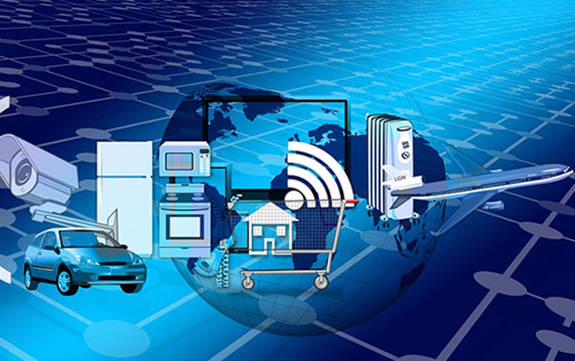‘Internet of things’ solutions for smarter factories and cities

In Summary
- This article featured in Swinburne’s 2017 ‘Research Impact’ magazine, produced in association with Nature Publishing Group.
From smartphones to smart electricity meters, electric cars to factory machines, ever more things around us are connecting to the internet.
Swinburne computer scientist Professor Dimitrios Georgakopoulos has developed ways to gather and distil high-value information from the cacophony of data generated by the internet of things (IoT).
“Just like the internet itself, where we rely on web data provided by other users we typically do not know, the grand challenge of IoT is learning from data produced by billions of machines and devices that are built, owned and maintained by others,” Professor Georgakopoulos says.
“Our strategy is to create IoT know-how that cuts across and has an impact on many of society’s problems.” His cloud-based IoT platforms and real-time data analysis engines have boosted productivity in farming and renewable power generation.
Now he is developing IoT solutions for smarter factories and cities. Take the latest connected cars filling our city streets, for instance.
“A Tesla car is a machine with thousands of sensors and cameras, connected to the internet 24-7,” Professor Georgakopoulos says. “A connected car could indicate when it needs a mechanic, and then assess service offers from nearby workshops based on price, reputation, et cetera.”
Socioeconomic issues, such as access to healthcare and the poor availability of affordable housing close to employment centres, may seem a very different beast to connected cars, but Professor Georgakopoulos has used the same data-driven IoT approach to address them.
Real-estate data collected from the internet can identify clusters of existing affordable houses, and data on daily population movements collected via smart devices can identify opportunities for improving transport links for residents.
Professor Georgakopoulos discovered the power of IoT data almost inadvertently. In 2010, while working at the CSIRO, he was approached by the High Resolution Plant Phenomics Centre and the Grains Research and Development Corporation to develop a large sensor-based system that would take the legwork out of crop trials conducted in approximately two million test plots around the country.
After struggling with logistics and costs of deploying just 150 compatible sensors, “we had the idea to leave the selection, purchase and deployment of the sensors to the growers and plant scientists,” Professor Georgakopoulos says.
He and his team developed an IoT-based data collection and analysis system that could use data from almost any such sensor. This system quickly grew to include thousands of plots and more than 65,000 sensors.
The lessons learned on the farms are now being applied in unexpected corners of research. Professor Georgakopoulos plans to build strong partnerships with the manufacturing industry to make IoT tools a reality for the next generation of factories. And, through work with authorities, citizens, and service providers in cities across the world, he hopes to improve transport, energy generation, and disaster response, as well as improve sustainability.

